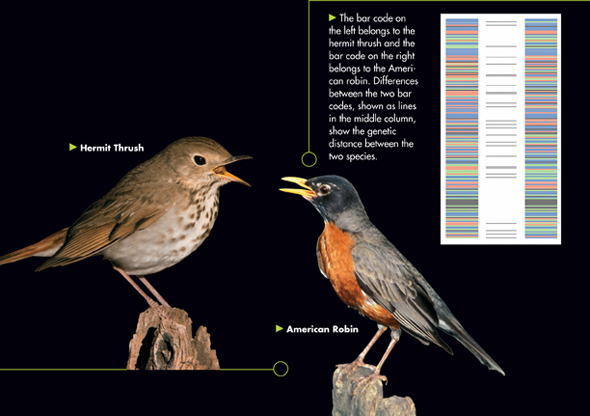Technology & Biology
Bar-Coding Life
Until recently, classification has been a time-consuming process. A new project hopes to make identifying species as simple as scanning a supermarket bar code. It combines DNA sequencing with miniature computers, data processing, and the Internet.
To make this work, researchers picked a segment of DNA that all animals carry, the mitochondrial cytochrome oxidase (CO1) gene. (A chloroplast gene will probably be used for plants). Each base in the DNA sequence of CO1 is shown as a color-coded stripe, making it easy to spot differences between the barcodes of two specimens. The results are stored in a database.
Closely related species have similar bar codes. Species that are not closely related have bar codes that are very different from one another.
In the future, a researcher will be able to take a tiny sample of tissue or hair, analyze it using a portable device, and get a report on closest matches. Recent versions of this software even use maps to show where similar specimens have been collected before.
WRITING
Learn more about DNA bar-coding on the Internet. Then write a paragraph describing another possible use for the DNA bar-coding technology.
Table of Contents
- Formulas and Equations
- Applying Formulas and Equations
- Mean, Median, and Mode
- Estimation
- Using Measurements in Calculations
- Effects of Measurement Errors
- Accuracy
- Precision
- Comparing Accuracy and Precision
- Significant Figures
- Calculating With Significant Figures
- Scientific Notation
- Calculating With Scientific Notation
- Dimensional Analysis
- Applying Dimensional Analysis





